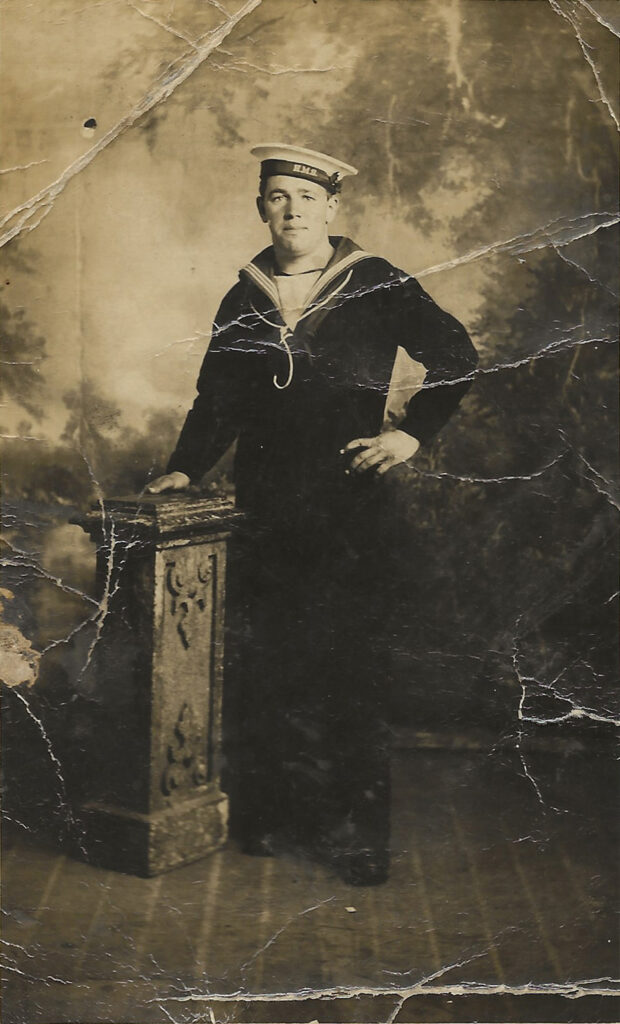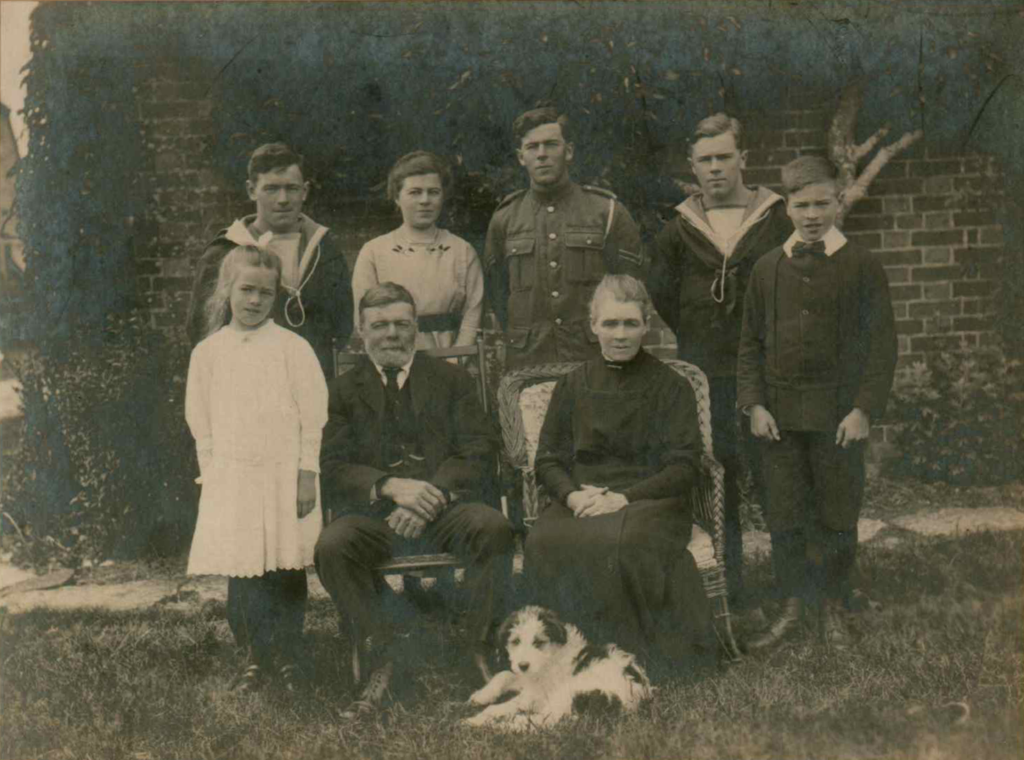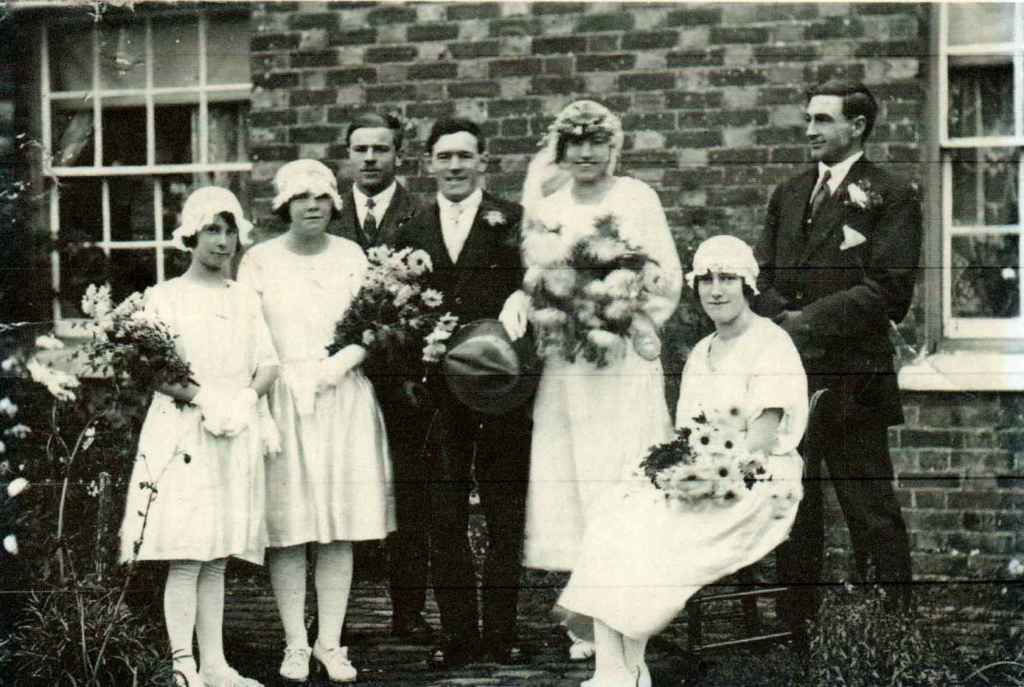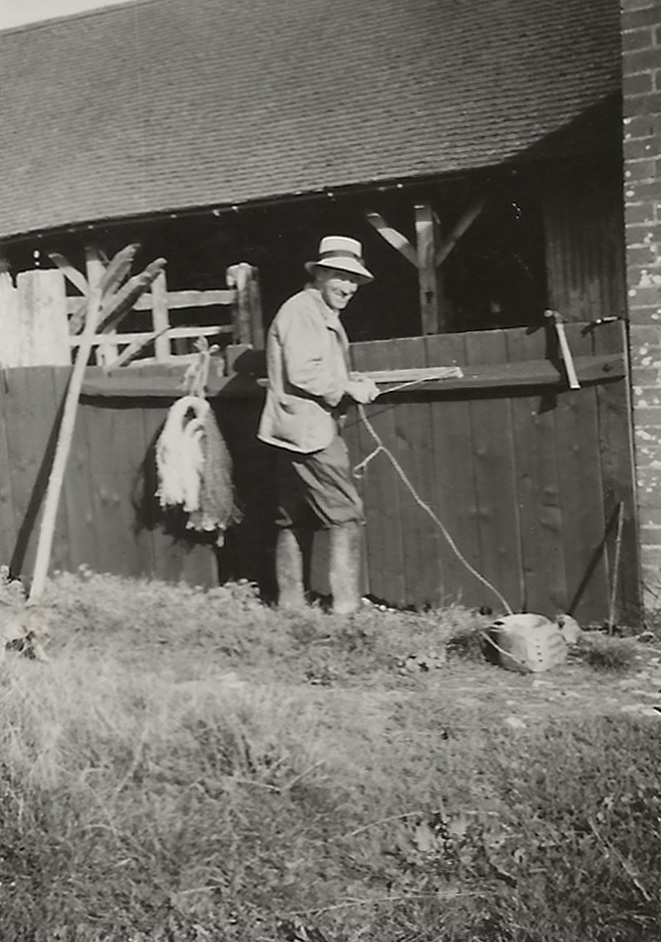The following appeared in the ‘Thanet Items’ section of the East Kent Times and Mail, 25th May 1904:
A writer in a county journal says:—”All Kentish people have cause to remember with gratitude a lady who has just passed away at Margate. I refer to Miss de Vaynes, to whom the county is indebted for the existence in collected form of many old Kentish songs and ballads, as well as a large number of fugitive poems relating to Kent. In making this invaluable collection, which is published in two volumes under the title of ‘The Kentish Garland,’ Miss de Vaynes had the benefit of the assistance of the Rev. Joseph Woodfall Ebsworth, Vicar of Molash, near Ashford, and a great authority on English ballad lore.”
Julia Henrietta Louisa De Vaynes, 1853-1904
Julia De Vaynes was born on 23rd January 1853, and baptised at the church of St John the Baptist, Margate. Her father, William Angus De Vaynes, had been described in the 1851 census as “Landed proprietor”; her Irish mother Julia, according to a newspaper obituary, “was descended from Conal-Eachwath, King of Munster, A.D. 366” and also from the “royal line of Plantagenet”.1 She was brought up in the family home of Updown House, St Johns, Margate, and having lived elsewhere in Margate and Ramsgate she returned there towards the end of her life – the 1901 census shows her as “Landowner manor” – and it was there that she died on May 16th 1904. The Kentish Express, 21st May 1904 reported her death as follows:
Lovers of old Kentish ballads will hear with deep regret of the death of Miss Julia Henrietta L. De Vaynes, the talented authoress of the “Kentish Garland,” which took place suddenly at Updown House, Margate, on Monday, at the age of fifty-one. Miss De Vaynes was the daughter of the late Captain De Vaynes, and was of Huguenot descent, her ancestors having come to this country after the Revocation of Nantes.
As well as compiling The Kentish Garland she also edited A Huguenot Garland, a collection of Huguenot songs, published in 1890.
Joseph Woodfall Ebsworth
Born on 2nd September 1824 in Lambeth, Ebsworth trained as an artist, and taught at the Glasgow School of Design before being ordained at York in 1864. He became vicar of Molash in January 1871 and remained there until his retirement in 1894, when he moved, initially to 13 Wellesley Villas, Ashford, and later to The Priory, Sackville Crescent, Godinton Road, Ashford.
Molash was a poor parish – the Oxford Dictionary of National Biography quotes a letter in which he described himself as “choir-master, clerk, sexton, pastor, parish church-warden and sole paymaster”, although the ODNB also records that “he devoted most of his time to literary work at home and to research in the British Museum”.2 He became an energetic supporter of the Ballad Society, and was responsible for editing and preparing for publication several volumes of ballads, including the final six volumes of the Society’s edition of the 17th century Roxburghe Ballads.
Ebsworth died on 7th June 1908, and was buried in Ashford cemetery on 11th June.
The Kentish Garland
In his book Victorian Songhunters E. David Gregory characterised the publication thus:
The Kentish Garland looked back to the vogue for regional collections started by James Halliwell and continued by Davison Ingledew, John Harland, Llewellynn Jewitt, and Thomas Allan. The approach was essentially antiquarian, and there was no material collected directly from oral tradition. The Kentish Garland came in two large volumes, published in 1881-1882, edited by Julia H. L. de Vaynes, a close friend of Joseph W. Ebsworth, who contributed the illustrations and some of the notes. In compiling the books de Vaynes drew on Ebsworth’s personal collection of ballads and poems relating to Kent, and she had no lack of suitable material. This superfluity allowed her to be selective, and one of her editorial decisions was to omit “all coarse ballads.” Recognizing that “the days and modes of speech of our old song-writers were different from our own” and that “words which fall unheeded on the ears of one age jar unpleasantly in the next,” she also felt constrained in a few instances to censor her remaining material, opting to “sacrifice a few lines” or to replace “offensive phrases” by invented substitutes in square brackets. As a result, The Kentish Garland failed to give a comprehensive picture of the popular culture of the county, and the number of vernacular songs included in the publication was surprisingly small despite de Vaynes’s extensive use of broadsides as primary sources.3
In other words, the material in The Kentish Garland was about Kent, not necessarily from Kent. The collection included some content which was entirely literary in nature, and there were relatively few songs which were sung by ordinary people in Kent – at least, not in the 1880s. Having said that, there were some, such as ‘The Rambling Sailor’, which were taken from broadside ballad sheets, but which have been collected from oral tradition, and which one would definitely class as “vernacular song” or “folk song”.
The two volumes were well received at the time. For instance the Whitstable Times and Herne Bay Herald, 21st May 1881, posted the following notice:
“THE KENTISH GARLAND.”-A handsomely-bound volume of ballads relating to the county of Kent has just been issued under this title, the work having been edited by Miss Julia H. L. De Vaynes, of Margate. This collection of Kentish ballads is the only one ever issued, and thus it will, in all probability, become exceedingly popular. Miss De Vaynes has put together, in admirably arranged order, a series of songs and ballads dating several centuries back, which are accompanied by interesting notes by Mr. J. W. Ebsworth, M.A., F.S.A., who has written an appropriate prelude entitled “The Men of Kent.”
The ballads and other pieces have been taken from the British Museum and Oxfordshire collections and other printed and manuscript sources; they relate to all parts of Kent, and comprise a great many election ditties, and songs on the Kentish Volunteers, bowmen, hopmen, cricketers, &c. Some of the pieces are exceedingly quaint, and those on election matters will be perused with peculiar interest. Two of these, which conclude the “Election group,” refer to the stormy period of the Catholic Emancipation Act; the first, ” Blue Banners with a green border,” appeared in the Times of October 21, 1828, and, we are told, was sung at the Star Inn, Maidstone, during an Anti-Brunswick Dinner, the Earl of Darnley in the chair, supported by Lord Sondes, etc.” We quote the refrain :
“March, march, Brydges and Winchelsea
Why don’t ye Brunswickers march in good order ?
March, march, Wells ‘of the bloody knee!’
All the blue banners have got a green border!”
There is a sonnet by Wordsworth (1803), and among the authors of other poems are Sir Walter Scott, Charles Dibdin, the elder, Jolin Oxenford, Walter Thornbury, W. C. Bennett, and Mr. Ebsworth. Miss De Vaynes states in her preface that The Kentish Garland is “not long to be left unaccompanied; ” and while congratulating her upon this first collection, we can assure her that another volume of these old Kentish songs and ballads will be cordially welcomed. We ought to say that the work has been well printed by Messrs. Stephen Austin and Sons, of Hertford, and admirably bound by Mr. H. J. Goulden, of Canterbury.
The two volumes were put out by a Hertford publisher, hence the extensive coverage in the Hertford Mercury and Reformer. The issue for 15th July 1882 quoted at length from an article on ballad illustrations which had appeared in The Bibliographer, “a Journal of Book-lore”:
Miss Julia de Vaynes has collected into two handsome volumes the most interesting and representative ballads connected with the county of Kent, and in her labour of love she has been greatly assisted by Mr. Ebsworth, one of our greatest ballad authorities. Mr. Ebsworth has not been content to throw out the stores of his erudition in notes; but he has contributed a series of woodcuts, which are copied from the original ballads and are greatly improved by the process of transfer. The history of ballad illustrations has still to be written, and we hope that some day Mr. Ebsworth will write such a history. Woodcuts that had become too old and worn for the books they were made for were handed over to the ballad printer, who used them with very little regard to their Illustration of the ballads to which he joined them. Sometimes the block was too big for the purpose required, and it was at once ruthlessly cut in in half; not only that, but the same woodcuts were used over and over again, and the accepted lover of one ballad did duty as the indignant father of another. Mr. Ebsworth has retained the quaintness, but he has thrown a spirit over the whole that undoubtedly will not be found in the original.
We have a representation of two ballad singers at Sevenoaks fair in olden time. A few names of ballad-singers have come down to us, and some stories which tell of their earnings. Henry Chettle, in his Kind Hart’s Dream 1592), mentions the sons of one Barnes who boasted they could earn twenty shillings a day by singing ballads at Bishop’s Stortford and places in the neighbourhood. ‘Out roaring Dick’ earned ten shillings a day by singing at Braintree fair. A gipsy named Alice Boyce, who came to London in Elizabeth’s reign, paid the expenses of her journey up to London by singing the whole way. She had the honour of singing ‘O the Broom’ and ‘Lady Green Sleeves” before the Queen. The ballad writers were mostly on the side of the king at the period of the Civil War; and in 1648 Captain Betham was appointed Provost Marshal with power to seize upon ballad-singers. After the Restoration, at a time when the Court was out of popular favour, it was discovered that ballad-singers had too much liberty; and as late as 1763 we learn that two women were sent to Bridewell for singing political ballads before Lord Bute’s door in South Audley Street. Dorothy Fuzz was a famous ballad singer at Sevenoaks fair, but we suppose she lived at a later date than the man and woman shown in our illustration. This Kentish Garland does great credit to the taste and research of Miss De Vaynes, who has brought together much interesting matter connected with the ever-memorable county of Kent. Mr. Ebsworth has added two full indexes—one of first lines, burdens and tunes, the other of authors, titles, subjects, etc. At the head of this second index is a woodcut of the female drummer, which we are told may be taken to symbolize the fair editor, with J. W. playing second fiddle or fife and subscribers following. Prefixed to the list of subscribers is a pretty little vignette in which we see a board with this inscription, ‘Notice—no begging allowed here.’ Lower down we that the issue is strictly limited to one hundred and fifty copies, and that a few remain unsubscribed for. We expect that these copies will not remain much longer.
The same newspaper, on 2nd September 1882, contained an even longer article, reproduced from The Times, of which this is but an extract:
Nearer to the heart than the love of country lies the love of county, and there are people with whom it becomes an absorbing and engrossing passion. No one goes so heartily about a grand piece oi literary life work as your fervid county historian, who has money and leisure and pronounced archaeological tastes; who is learned in mediaeval architecture, and curious in legends and pedigrees. Kent, with its Hasteds and Lambardes and their humbler followers, is especially rich in county histories which have treated its manifold attractions—historical, picturesque, domestic, and romantic—with all the minuteness of scholarly detail. But the richer the harvest, the more is left for the gleaners; and Miss De Vaynes and Mr. Ebsworth have supplemented the more serious labours of their predecessors by gathering a variegated Garland of Kentish poetry. They do not profess to stand upon the excellence of the verses in their collection, and many of these are more characteristic than beautiful, as will be obvious when we say that a most miscellaneous collection is contained in a couple of portly octavo volumes, and that the harmonious measures of a Spenser or a Waller are mingled with doggerel catchpenny ballads and effusions disentombed from the poets’ corners of the county journals of former generations. The sole condition of admission consists in the more or less questionable metre being illustrative of something in connexion with the county. Yet there can be no question that not only to Kentish men, but to archaeologist in general, the quaint medley will be of great interest. Kent has always been in many ways a representative county. To the south it is washed by the narrow waters that divide our Island from the nearest Continental ports, while on the northern side it touches the confines of the metropolis. It was the Kentish men who bore the brunt of the foreign invasions ; who boasted of dictating conditions to the Conqueror, and of bringing his fierce half-brother of Bayeux to reason ; and who, repeatedly mustering in their masses under popular leaders, marched on the Court and the capital in defence of popular rights. Kentish men went to man the fleets that lay at their moorings in the Downs, and the smuggling cutters that ran their cargoes everywhere, storing contraband in the caverns in the chalk cliffs. Kent has supplied to contemporary biography a superabundance of martyrs, and highwaymen, while it has always been intimately associated with literary men from the days of the munificent Archbishop Lanfranc down to those of Charles Dickens. We have the humours of the Canterbury pilgrimages as celebrated by Chaucer, and the humours of Greenwich fair, as sung for coppers at street corners. There are pre-historic remains like those of Kit’s Coty House ; there are ecclesiastical piles like the Cathedral of Canterbury ; and there arc castles and balls, restored or in ruins, once associated with noble and knightly families which are nothing more nowadays, than a name and a memory. The Kentish bowmen immortalized themselves from Hastings to Agincourt; the wealth of the yeomen of the Weald, represented by Mr. Wardle, of the Manor Farm, in recent fiction, had passed into a proverb in the time of the Plantagenets ; while the fiercely contested battles of the hustings which half ruined more than one of the most ancient families exercised a greater influence on contemporary politics than those of Lancashire or the Ridings of Yorkshire. So that Miss De Vaynes’s industry easily found material for her collection ; while Mr. Ebsworth has contributed a variety of notes full of antiquarian and historical learning.
The two volumes of The Kentish Garland are available to view on the Internet Archive:






